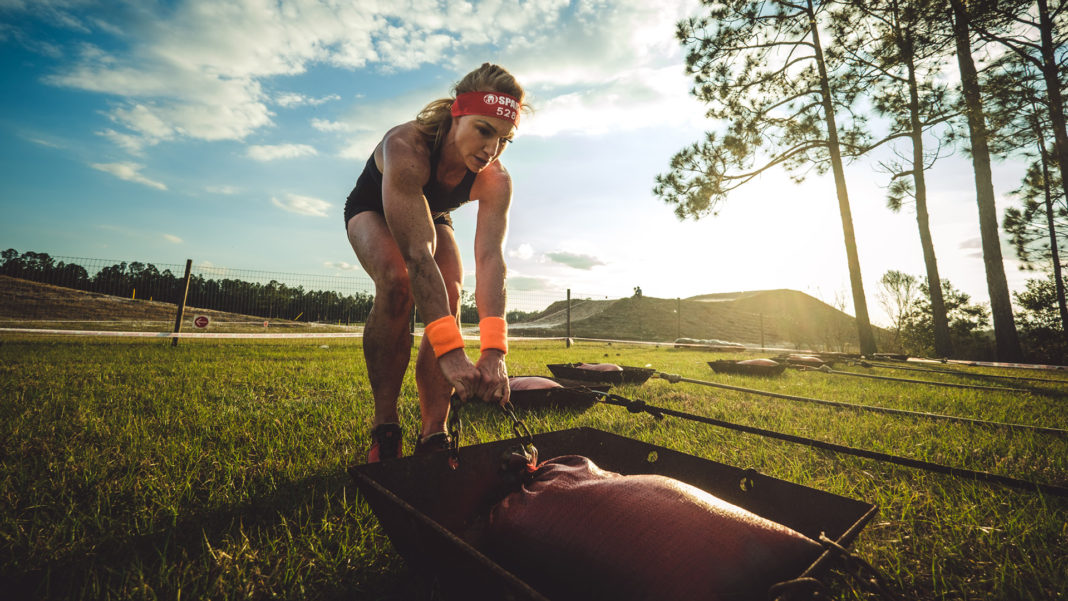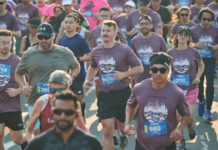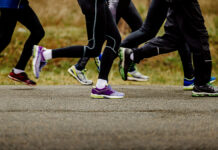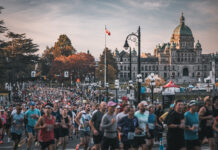Even if you never run an obstacle course race (OCR), training for one could get you in the best shape of your life.
Training like an obstacle course racer is possibly the most comprehensive training program out there. In an OCR you could be running, pulling, pushing, traversing, flipping, crawling, dragging, hoisting, climbing, carrying, balancing, bounding and throwing. Imagine the training that goes into accomplishing all that.
There are a few must-haves to include in your OCR training program, whether you’re planning to hit a race or just want to train like you are.
RESISTANCE
Of course the key to success in any athletic endeavor is resistance training. The most important thing to remember is the “why” for the “what.” For example, in an OCR you are rarely using two arms or two legs at a time. Think monkey bars, rope climb or running. This means your training needs to be unilateral. You need to prioritize one-arm or alternate-arm lat pulls and rows, not two-arm seated, for example. You need to prioritize one-leg squats and deadlifts, not bilateral squats and deadlifts. Imagine the physiological adaptations you can get for managing anything life throws at you when you train this way.
ENDURANCE
This is probably the most important element. You’ll be running for endurance as well as gripping, holding heavy objects, or hanging. Think of the mental toughness you’ll gain when you don’t give in to a quarter-mile bucket carry, even when your mind is screaming at you to drop it.
PLYOMETRICS
Remember the science around safely training for athleticism: strength before power, stable before unstable, and recovery. Work up to plyometric training with some excellent-form strength training first. You need plyometrics for landing off walls and hurdles. Upper body plyometrics are useful for crawls, throws and burpees. Plyometric training will make you a stronger uphill runner. Incorporate your agility training here. Any recreational sport you enjoy will benefit from plyometric training.
RUNNING
Incorporate all metabolic pathways in your running training, but especially lactate threshold training. That is, active recovery after sprints. Obstacles will often get your heart rate close to its max, and anyone who wants to run their best race will have to know how to immediately get back to running. Running is one of the best ways to train your heart to stay young.
TECHNICAL SKILL
If you’re planning to actually do a race but you don’t have access to some of the obstacles, just remember the elements of the activity. Break them down and train them individually. Even if you never get practice on the actual obstacle, you’ll be setting yourself up to win.
Consider getting over an eight-foot wall: This obstacle requires upper body strength, core strength, mobility, and eccentric deceleration strength. To succeed you should be doing pull-up training, hanging leg raises, rolling and stretching all joints, and plyometric depth jump training — that is, a focus on eccentrically decelerating your landing as you drop.
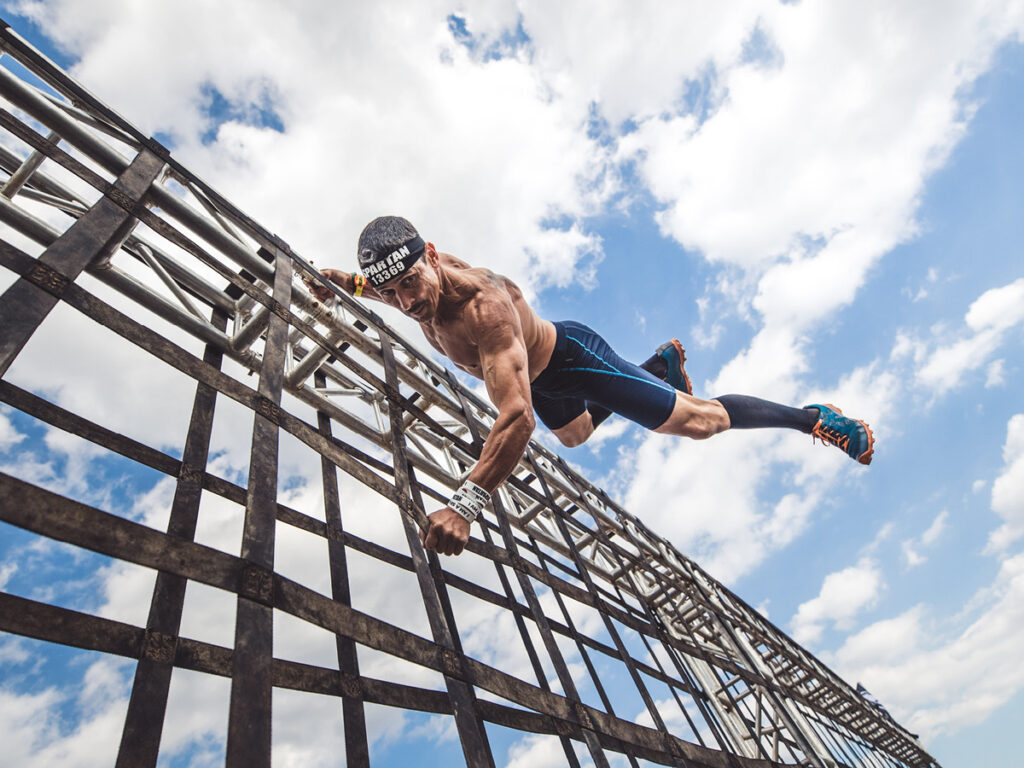
Monkey bars: You’ll need hanging endurance one arm at a time. Start with two arms and slowly work up to one. Then add some swing. Get creative in your gym environment by looking for ways you could go from one spot to another on a pull-up bar or cable rig. Find a playground to test your skills. Challenging some kids to a monkey-bar race is always fun.
Rope climb: I’m not going to lie, this is an upper-body challenge. The monkey-bar training above, the hanging-leg raises, and the one-arm-at-a-time pulling will help. You most definitely need to watch some videos on the J-hook or S-hook for your legs. I would not attempt leg-less climbing. You’ll wear out your grip for the next obstacle.
WHAT ARE THE METABOLIC DEMANDS OF THE SPORT
Someone who is OCR-fit is proficient at both aerobic and anaerobic activities. Vo2 max fitness (the highest rate an athlete can use oxygen during vigorous exercise) is a huge determinant in OCR performance as is lactate threshold (the athlete’s ability to buffer acidity created during high intensity exercise). So you’ll want to train all of it. That said, whether or not you are preparing for a race, High-intensity interval training (HIIT) will improve both aerobic and anaerobic metabolism. As usual, vary your work to recovery ratios from session to session. For example, if you do a workout with 1:8 work to recovery ratio, next session try doing 1:3.
OCR – THE BEST ALL-AROUND TRAINING
Even if you never attempt an obstacle course race, the training will make you a more functionally fit person. Everything you do in life will be easier and more enjoyable whether hiking the Grand Canyon or walking your dog. Training like an obstacle course racer is the most comprehensive training program out there.
You May Also Like
Reach Your True Performance Potential
Photos courtesy of Spartan Race
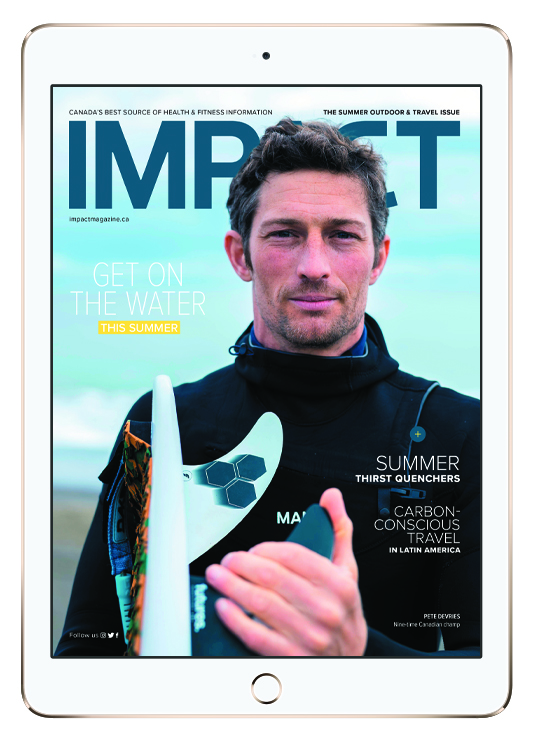
Read This Story in Our 2022 Summer Outdoor & Travel Digital Edition
Cold Water King, Core-Centric Fitness, Prepare for Hiking Season, Mountain Bike Fundamentals, The Simple Ways Movement Gives Us ‘Hope’, recipes and much more!

